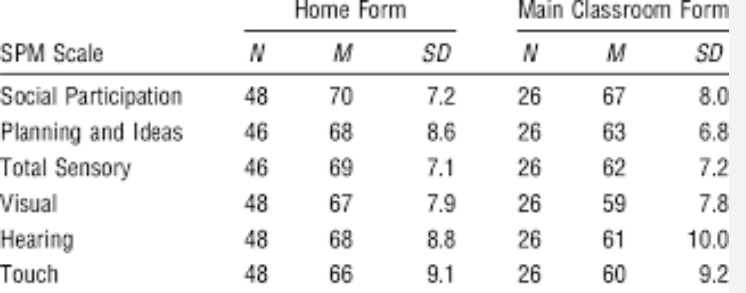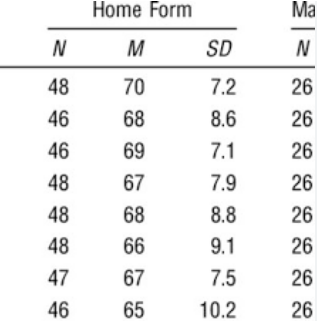The SPM scoring method grades students from A+ to G, where A+ is the highest and G is a fail, with credits awarded for C6 and above.
Table of Contents
Grading Scale
The SPM has a detailed grading scale using the A+ to G grading system, with the former indicating excellent achievement and the latter implying that the student has failed the exam. However, these grades not only help to gauge the performance of a student but also contribute to significant repercussions for their educational and other academic-related opportunities. In this grading scale, each letter is equivalent to a specific range of marks, with the correlation to an A grade being higher performance. This index of scoring progresses from an A+, which is normally for above 90%, to poorer performances culminating in a G grade, which is normally below 40%.
One practical example of the meaning and impact of these grades on an individual is on their application to college. This may specify the minimum number of credits from SPM or O levels, which refers to the C6 or better in some subjects. For example, an individual wishes to gain a scholarship in a particular institution and may therefore need to gain at least an A- in science or any language, which implies that their mark needs to be at least 75% . Overall, this level of scoring is useful for educators in order to understand where a student needs improvement to ensure that they use their resources in this regard. Additionally, the system promotes the idea that higher scores or a letter variance is essential because receiving one mark for a student is already a privilege.
Subject Papers
The SPM examination is used to evaluate students’ performance over a variety of subjects, each of them consisting of several papers aimed at testing a particular aspect of performance. The number of papers depends on a subject, but most of them include at least two to three. Each of them may take different forms, such as objective questions, structured responses, and practical tests, spanning various aspects of knowledge and skills ranging from theoretical information to experiments and practical evaluation.
Each subject has several types of papers, the result of which is taken into consideration when determining a final grade for a subject. If, for example, the subject is Science, it has three papers, with Paper 1 being an objective paper with multiple-choice questions. Paper 2 includes structured and essay questions, justified with answers , while Paper 3 refers to laboratory work and practical experiments. This form and distribution of papers ensure that a student that is tested prepares the subject not only in terms of theoretical knowledge but also understands and applies the information in practical tests. In addition, the performance in practical iterations can make a significant change in the overall score, which is beneficial for subjects like Science and Art.
During exam preparations, time management considers the difference in allocation due to the weight of theoretical papers. In the above-mentioned example with Mathematics, Paper 1 might represent 40% of the final score, with 50 multiple-choice questions that have to be submitted in an hour. Paper 2 takes two and a half hours, with 60% in weight, is divided into structured and essay questions . Therefore, in the first instance, students may spend time exercising problems in order to maximize the score in the second paper. The existence of different additional works that have been created with the student in mind allows a systematic approach determined by the form of the papers and the weight of each.

Aggregate Score
The SPM has no single aggregate score, at least not in the way people are used to such scores. There is no GPA or other type of cumulative average achieved by combining the values obtained for each subject. Instead, each student is given grades for each of the subjects, which together form a description of the student’s overall performance in each aspect of the curriculum. Individual subject grades are given a central importance: for university applicants, the relevant admissions departments carefully consider the grades obtained in each subject to assess if candidates meet the qualifications for each of their courses.
In most circumstances, some sort of thematic and responsible party-level group of subjects is considered as a qualification for an area of study. For example, an engineering program may have a mathematical and a scientific qualification,. A student who obtains As in both the Physics and Mathematics papers of his SPM but only acquires a B in the History paper will be well-qualified to join an engineering program. It is likely that colleges will use these grades to determine whether the student is eligible to enroll in advanced courses in the subject area or to be excused from basic entry-level courses , which, taken together, means that these grades, rather than their accumulation in some overall score, have the greatest significance in practice.
Students interested in securing as many post-SPM opportunities as possible will want to do well in the subjects relevant to their chosen field of study. This means that no single measure is much more important than the others, and it is a safer approach to try to do well in many disciplines.

Credit System
In the SPM, a credit refers to a grade of C6 or better in any subject. Students take credits to ensure that they are eligible for further studies, particularly in pre-university programs and vocational courses. This is because most Malaysian tertiary institutions and scholarship bodies require a predetermined number of credits in particular subjects as the most basic entry qualification. A typical university entry requirement would be at least five credits, at least two of which should be in Bahasa Malaysia and Mathematics . In this case, credits ensure that students have a minimum foundational knowledge base from which to begin their studies.
A credit also offers a student a more advanced baseline from which to apply for specific courses. An example is a student’s attempt to become an engineer. Such a student would have to ensure that they have secured credits in the compulsory subjects as well as in Physics and Additional Mathematics. In general, the hard, technical subjects demand a credit as opposed to weaker passes such as D7 or E8.
Credits are also useful in the comparison of the academic strengths of applicants in competitive programs. For example, student X might have credits in all science subjects such as Chemistry, Biology and, Physics. Student Y may also have five credits, but for subjects unrelated to a health sciences program. A health sciences program is more likely to choose student X because he has the necessary foundational knowledge required for such a course. A student may also allocate time and resources to subjects they are at risk of not achieving a credit in. This could include additional tuition or group study sessions and a more focused revision of past examination papers. This is because each credit a student has enhances their opportunities in the educational field and offers them a more certain way of being eligible for their desired career or course in the future.

Additional Points
In the SPM scoring system, certain subjects may have additional points granted, which will, in turn, affect a pearl’s prospects in the post-secondary setting. Specifically, for students applying for highly competitive academic programs or scholarships, these extra points may be recognized. As a rule, the additional points are rewarded for the outstanding performance in the subjects that are directly related to a particular field of study, such as Science, Mathematics, and languages; as a result, the former are particularly important from the point of view of the pearl’s interests.
For example, a student that has enrolled as an Engineering major may obtain additional points for advanced mathematics and physics. A+ grades in the subject may accumulate the number of points added to the student’s application . Finally, the pearl will obtain a competitive advantage since the weight of the application will increase. Similarly, scholarship programs will add the number of points as follows: “A+ = 20, A = 15, A– = 10 points” . Hence, attaining outstanding grades in the subject will contribute both to the accumulated average Grade Point Average and the addition of extra points to the student’s . Pearls who understand that specific additional points may be included in their subject marks plan their study in accordance with the aforementioned requirement. Specifically, more time is usually spent on doing work in the lab as a part of their Science training or participating in problem-solving sessions, which are usually developed for enhancing the skills of Mathematics work. Hence, the overarching goal is to make sure that the highest grade possible is attained and as many additional points as possible are made.

